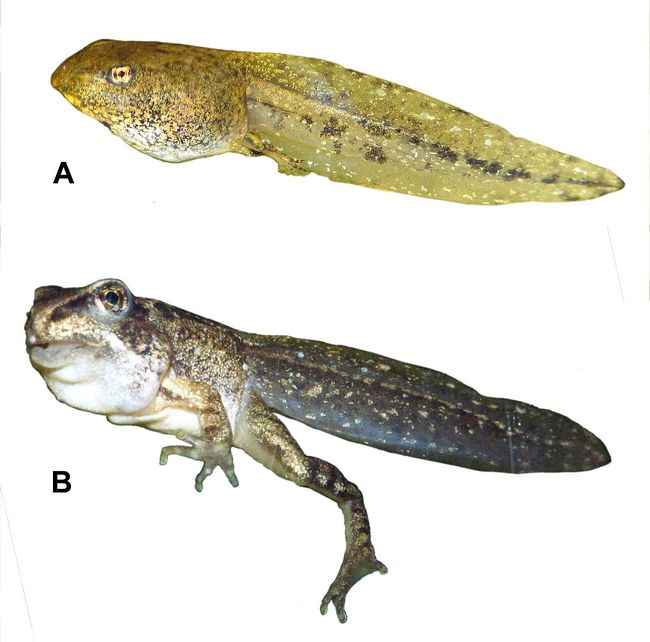Athena Review Image Archive ™
Amphibian tadpoles (Rana)

Tadpoles of the green frog (Rana)
Amphibians, whose name means "two life types," are a class of land vertebrates including frogs and salamanders. Their name stems from the fact that at least the first part of the life cycle must be spent in water. Their reproduction involves larva hatched as tadpoles in open water.
The figure shows the tadpoles of the green frog (Rana) at two stages. A (above) is a recently formed tadpole, while B (below) is one at the final stage of metamorphosis before becoming an adult frog.
Amphibians evolved from Tetrapods, the most primitive land vertebrates, who had in turn evolved from lobe-finned fish in the Late Devonian period at about 370-360 mya. Fossil amphibian taxa first appeared in the Mississippian period at about 340 mya. Fossil amphibians are grouped into several orders, including anthracosaurs (“coal lizards”), temnospondyls (“cut vertebra”), and lepospondyls (“spool vertebra”).
Extant amphibians including frogs, newts or salamanders, and caecilians are descended from Lissamphibia, who first appeared in the Early Triassic period at about 250 mya. The earliest known frog is Prosalirus, from the Early Jurassic period (190 mya).
References:
Benton, M.J. 2005. Vertebrate Paleontology. Blackwell.
Romer, A.S. 1966. Vertebrate Paleontology. University of Chicago Press
Shubin, N.H. and and F.A. Jenkins 1995. An Early Jurassic jumping frog. Nature. 377 (6544): 49–52.
Copyright © 1996-2020 Rust Family Foundation (All Rights Reserved).